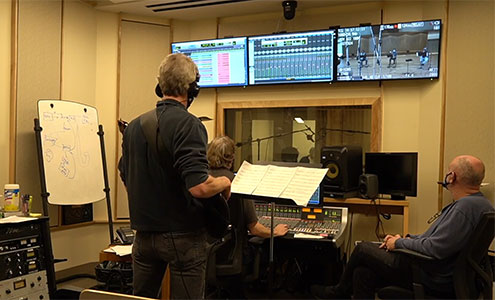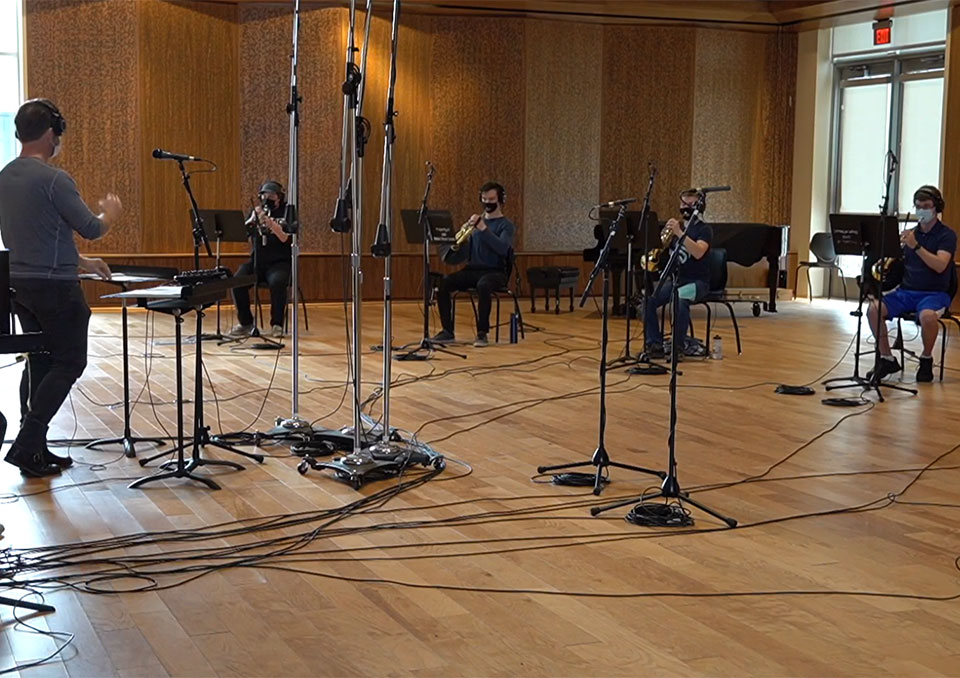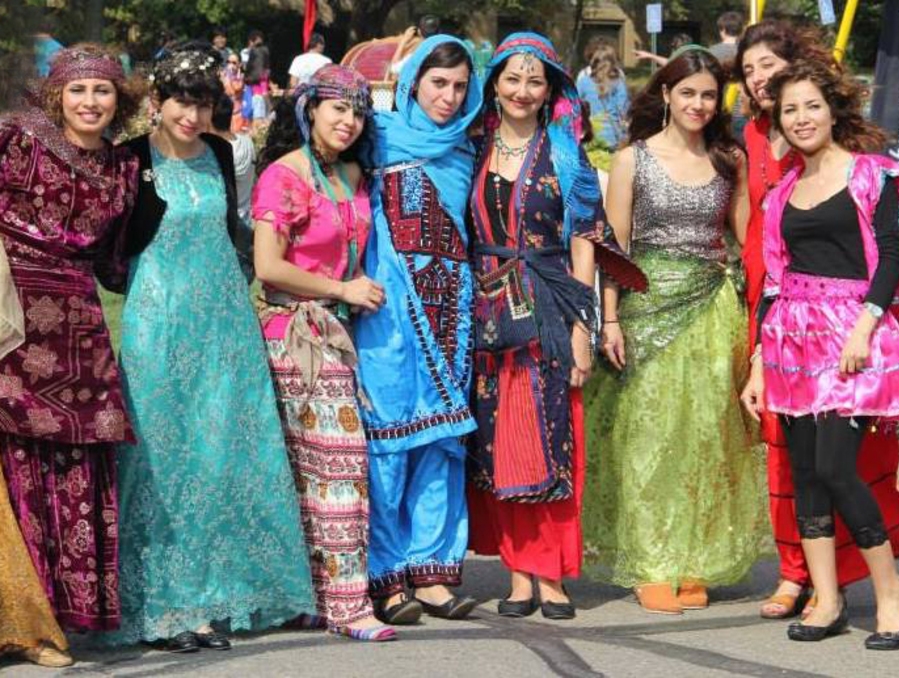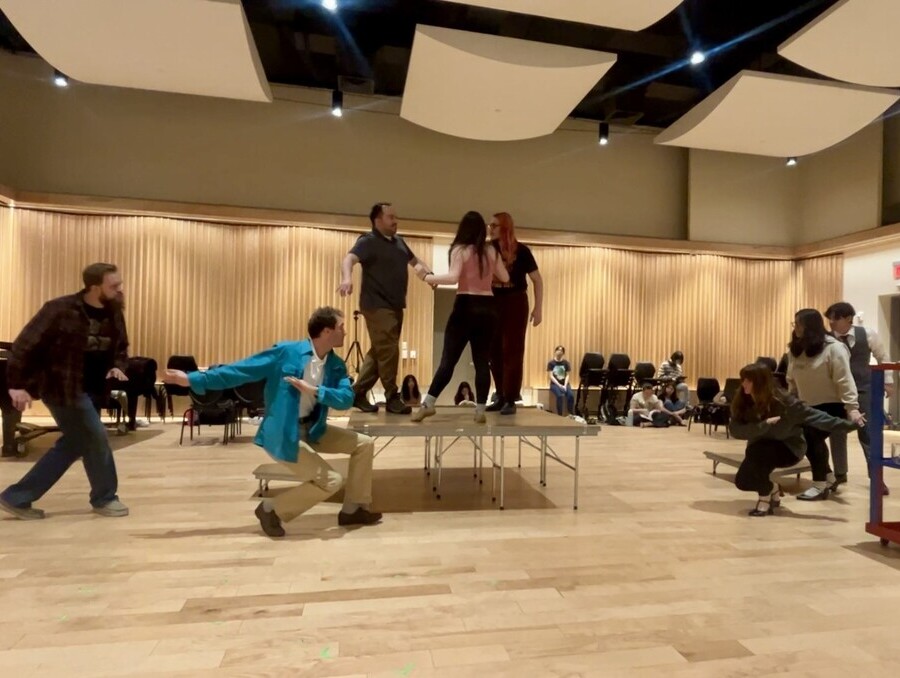The Nevada Wind Ensemble initiated a large-scale recording in March – the first group to maximize all the advanced technology the recording studio has to offer inside the University Arts Building. The project, which received support from Research & Innovation, was no small feat to organize, taking two full days to coordinate technology, equipment and student and faculty schedules. The recording project is now being remixed and edited to be released on major streaming devices later this summer.
Conductor of the Nevada Wind Ensemble at the University of Nevada, Reno and Associate Professor of Music in the College of Liberal Arts, Reed Chamberlin, directed this recording project.
“It was born out of the necessity to reimagine how we make music during a global pandemic,” Chamberlin said.
Part of the project, Chamberlin said, was to maximize the ensemble concept to give an audience an experience beyond what they typically would engage in with a concert band performance.
One of the ensemble students, music education major Dexter Hidalgo, said he really enjoyed being able to perform with his peers again.
“Even though we have not had a live audience in so long, it was great to be selected for such a great experience,” Hidalgo said.

The recording sessions were held in a band rehearsal room in the University Arts Building which also served as the “tracking room” for recording. The tech team, including Tom Gordon, instructor of recording arts, and Ray Silva, music technology operations supervisor, helped to arrange individual microphone and tech setup for each piece.
At times, the logistics was complicated, as COVID-19 health and safety protocols were strictly followed. This included performing for 30-minutes at a time, while taking 20-minute breaks in between rehearsals to allow the HVAC system to clear the air. It was for this reason, seven songs of five-minutes or less in duration were recorded.
While social distancing was also strictly adhered to, ensemble participant Nicole Shepherd found the smaller group setting to be a positive experience.
“I've done several recording projects with the Wind Ensemble in the past, but this one was unique in that we were working in a chamber setting rather than with the entire ensemble,” Shepherd said. “Breaking off into smaller groups reinforced the importance of listening and blending within an ensemble.”
The recording team depended on Dante high speed internet (a sort of network to deliver an infinite amount of audio channels to a single location) to seamlessly transmit sound in real-time to the recording studio where the process was controlled. Isolation booths inside the recording studio allowed for multiple simultaneous recordings to occur at once.
“The goal of the project is to provide creative fodder to classical music audiences, potentially attract broader audiences who are interested in novel effects and sound design, and to provide an example of the high level work that we do each day at the University of Nevada, Reno,” Chamberlin said.
During the recording process, the performer creates acoustical sound waves which are converted to electrical energy by a microphone, and then converted to a digital signal which is transmitted to the recording studio via Dante. The University Arts building now has this capability in any room in the building as well as in Nightingale Concert Hall.
“While much of the talk has been about the technology that made this possible, in the end the greatest asset will always be the human one,” Chamberlin said. “The final product is a sum of everyone’s efforts, ideas and expertise.”
Gordon and Silva will work on post-production editing in the coming months and plan to get creative by adding special effects to the classical-style recordings (renaissance-era music arranged for wind instrumentalists) to create a new and more modern sounding genre.
















